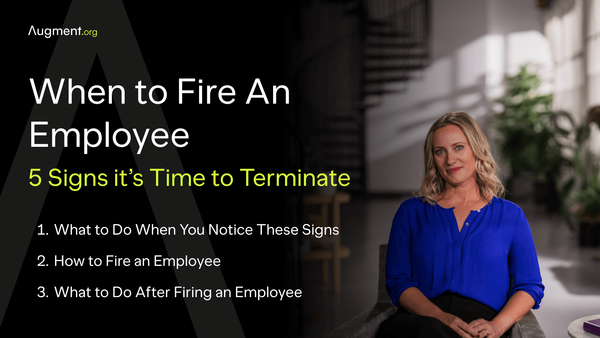Chatbot Types: Which Type is Best for Your Business?
Understanding chatbot types is crucial for businesses seeking to improve customer engagement. From AI-powered bots simulating human conversation to rule-based ones providing consistent responses, chatbots can transform customer interactions and automate service.

What is a Chatbot?
A chatbot is an advanced software application engineered to interact with users in a conversational manner. These digital assistants are integrated into various platforms such as websites, mobile apps, and messaging services, where they serve as automated points of contact. Unlike traditional software, chatbots are equipped with either predefined rules or artificial intelligence (AI) to engage users. This enables them to handle a wide range of tasks - from fielding basic customer queries to providing complex, interactive experiences.
Chatbots can be as simple as rule-based chatbots that respond to specific commands or as sophisticated as AI chatbots that use natural language processing (NLP) to understand and respond to user queries in a more human-like way. This flexibility makes them invaluable across numerous industries, functioning as customer support chatbots, transactional bots for e-commerce, or even as personal virtual assistants. Their ability to mimic human interaction, learn from user interactions, and provide instant responses 24/7 makes them an essential tool in enhancing user engagement and automating aspects of customer service.
How Does a Chatbot Work?
Chatbots function by interpreting and processing user's queries and then delivering responses based on a set of algorithms and pre-defined rules. At the heart of this technology lies either rule-based programming or artificial intelligence.
Rule-based chatbots are programmed to respond to specific commands or questions. They work well for straightforward tasks like answering frequently asked questions (FAQs) or guiding users through menu-based options. These bots follow a clear set of rules and can handle predictable user interactions effectively.
On the other hand, AI chatbots, including those using natural language processing (NLP), are more advanced. They understand the intent behind a user's query, not just the keywords. This ability allows them to engage in more human-like conversations, deciphering user intent and providing more nuanced responses. AI chatbots learn over time, improving their responses based on past interactions. This makes them ideal for tasks requiring a degree of interpretation, such as customer support chatbots handling diverse customer queries or virtual assistants providing personalized assistance.
In both types, the chatbot software is integrated into a messaging platform or a digital interface, where it interacts with users. These interactions can range from simple information retrieval to more complex tasks like booking appointments or assisting with purchases, enhancing user engagement and improving customer service.
Types of Chatbots
The chatbot landscape is diverse, with different types designed to meet varying business needs. The primary categories include:
- Rule-Based Chatbots: These are the most basic type of chatbots. They operate on predefined rules and scripts. Typically used for straightforward tasks like answering FAQs or guiding users through a process, these chatbots respond to specific commands or keywords. They are easy to program but lack the flexibility to handle complex or unexpected user queries.
- AI Chatbots: These chatbots are powered by artificial intelligence, particularly machine learning and natural language understanding. They learn from interactions and can handle a wide range of queries by understanding the context and intent behind a user's message. AI bots are more dynamic and can provide personalized responses, making them suitable for customer support, virtual assistant roles, and enhancing customer engagement.
- Hybrid Chatbots: Combining the best of both worlds, hybrid chatbots utilize rule-based systems for efficiency and AI components for more complex interactions. This allows them to handle routine queries efficiently while escalating more complicated issues to the AI component or a human agent.
- Voice Bots: Voice bots are a type of AI chatbot that interact through spoken language rather than text. Integrated with voice recognition technology, they are commonly used in virtual assistants like Google Assistant and in various customer service applications.
- Contextual Chatbots: These are advanced AI chatbots that not only understand and respond to queries but also remember past interactions. This feature allows them to provide more accurate and context-relevant responses over time.
- Transactional Chatbots: Designed for specific transactions, these chatbots assist users in completing tasks like booking, purchasing, or ordering without human intervention.
- FAQ Chatbots: Specifically designed to answer frequently asked questions, these chatbots can significantly reduce the workload on customer service teams.
Each type of chatbot serves distinct purposes and offers different levels of interaction and user engagement, depending on their complexity and the technology they utilize.
Which Type of Chatbot is Best for Your Business?
Choosing the right type of chatbot for your business depends on your specific needs, customer interaction style, and the tasks you expect the chatbot to perform. Here's a guide to help you decide:
- Rule-Based Bots: If your business requires handling straightforward queries or guiding users through fixed processes, a rule-based chatbot is ideal. They are simpler to implement and can efficiently handle tasks like FAQ responses or menu-based selections. Perfect for businesses looking for a cost-effective solution to manage common user queries.
- AI Chatbots: Businesses needing to handle a range of complex queries, provide personalized customer experiences, or engage users with conversational AI will benefit from AI-powered chatbots. An AI bot is suited for companies looking to improve customer satisfaction through more nuanced and intelligent interactions.
- Hybrid Chatbots: For those seeking a balance between rule-based efficiency and AI sophistication, hybrid chatbots are the go-to option. They can handle routine queries swiftly while employing AI capabilities for more complicated tasks. This type is suitable for businesses aiming to automate customer service without compromising the quality of more complex interactions.
- Voice Chatbots: Businesses focusing on accessibility or targeting users who prefer voice commands should consider voice bots. A voice bot is ideal for integrating into voice-enabled devices or applications, providing a hands-free user experience.
- Transactional and Sales Bots: If your primary goal is facilitating transactions, like booking, ordering, or selling, transactional or sales bots are designed for this purpose. They streamline the buying process, enhancing the user's shopping experience.
- FAQ Chatbots: For businesses that receive a high volume of common inquiries, FAQ chatbots can significantly reduce the workload on customer service teams, providing quick and consistent answers.
- Contextual Chatbots: If your business values long-term customer relationships and wants to offer highly personalized experiences, consider contextual bots. These AI chatbots remember past interactions and tailor their responses accordingly, enhancing user engagement over time.
Ultimately, the best chatbot for your business will align with your customer service goals, the complexity of user queries you receive, and how you want to integrate the chatbot into your existing systems and processes. The key is to choose a chatbot that not only meets your current needs but can also scale and evolve as your business grows.



